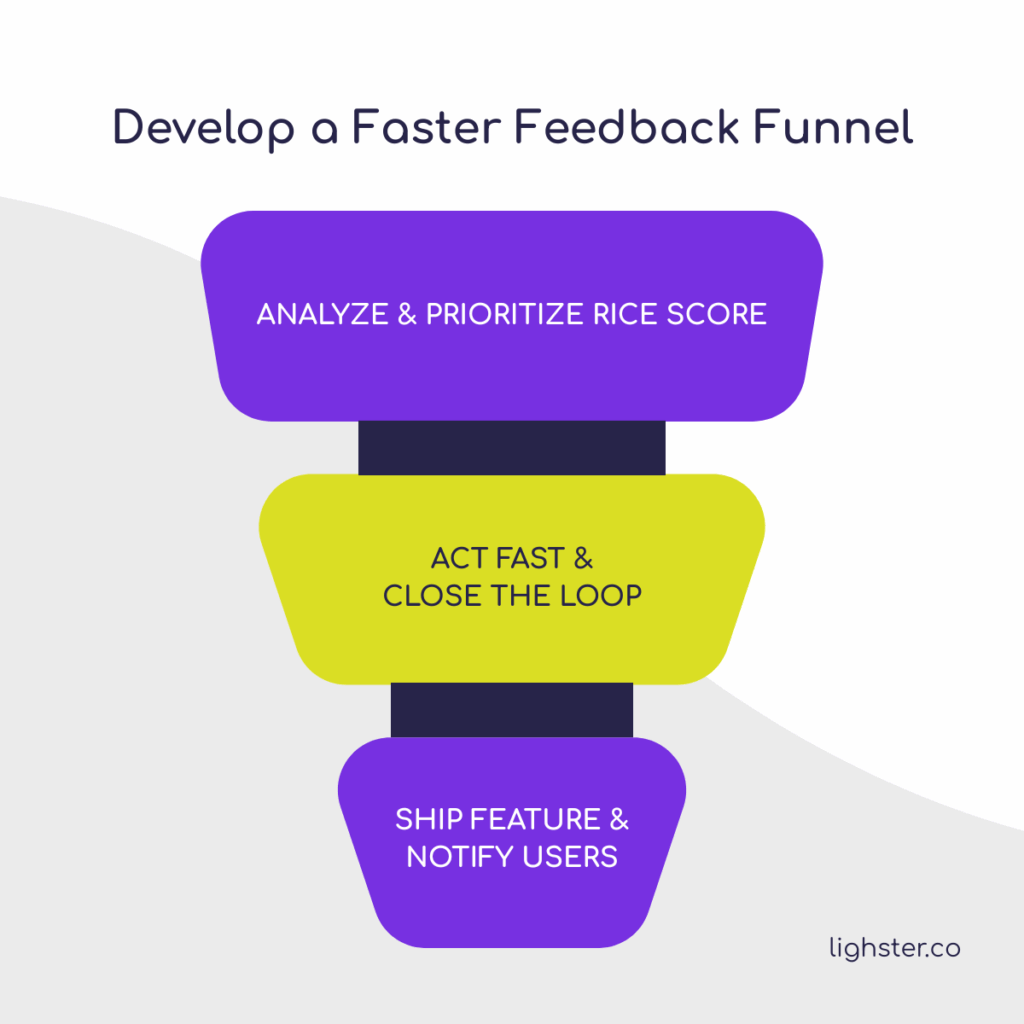
Lightster Receives Survey Software Recognition from a Distinguished B2B Review Platform
September 22, 2024
90% of startups fail. A third of them crash because they built something nobody wanted. This isn’t a tech problem or a funding problem—it’s a listening problem.
Take the startup that spent eight months building a feature they were convinced would change everything. They had wireframes, user stories, detailed specs. When they finally launched it, crickets. Turns out, users had been asking for something completely different in support tickets the whole time.
This happens because teams treat feedback like a nice-to-have instead of oxygen. Users are literally telling you what they need, but if it takes three months to act on that information, you might as well not be listening at all.
Speed Changes the Game
Fast feedback loops don’t mean rushing—they mean shrinking the time between “user says something” and “team does something about it.” If you learn from users once a month, you’ll get 12 chances to get it right in a year. Learn weekly? Now you have 52 chances. Companies that talk to customers weekly are way more likely to build stuff people actually use. When someone gives feedback, responding within 24 hours isn’t just polite—it keeps them engaged in helping you improve.
Spotify’s Discover Weekly is a good example of running the feedback marathon. When it launched back in 2015, people streamed over a billion tracks in just ten weeks. More than 7 out of 10 users actually saved songs to their own playlists. That’s not normal for any music feature.
Here’s what most people don’t know: Spotify has people watching user behavior constantly. Not just weekly reports or monthly meetings. They’re tracking what happens when someone skips a song, how long they listen, what they do next. Their whole system learns from this stuff in real time.
Netflix figured this out early too. They don’t spend months building the perfect recommendation system. Instead, they test tiny changes all the time, such as different thumbnail images, where buttons are placed, and even how the “next episode” countdown works. They watch what keeps people watching and what makes them quit. That’s how they stay ahead when every company is trying to copy them.
Quality comes from continuous improvement based on real user needs, not from perfecting something in isolation.
Building a Good Feedback System
Getting feedback isn’t the hard part. People will tell you what they think if you ask. The problem is most teams ask in only one way, then wonder why they’re missing the full picture.
In-app surveys work because you’re catching people right when they’re using your product. Their experience is fresh. User interviews dig deeper into the why behind their actions. Support tickets? Those show you exactly where people get frustrated enough to ask for help. Analytics data tells you what people actually do, which is often different from what they say they do.
Once you have all this feedback coming in, you can’t just build everything everyone asks for. That’s a recipe for disaster. Some feedback matters more than others. RICE scoring helps here – it looks at how many people a change affects, how much impact it’ll have, how confident you are it’ll work, and how much effort it takes to build. Working in smaller pieces means you can see if something’s working or not without investing months. If it’s not working, you pivot. If it is, you keep going.
Closing the loop:
Don’t forget to actually tell users when their feedback becomes a feature. When you show someone their idea made it into the product, they feel heard. They’ll keep helping you improve.
Speeding Up Your Feedback Loop
Start by timing how long it takes from user feedback to product changes. Then pick one simple way to collect more feedback. Maybe it’s a two-question survey in your app or scheduling weekly user calls. Look at your recent changes and see if they actually improved your key metrics. Use this data to guide your next moves.
However, bear in mind that the tricky part isn’t getting feedback—it’s getting quality feedback from the right users who actually understand your product and can give you actionable insights. Some teams struggle with this because they end up with feedback that’s too broad or from users who don’t really represent their core audience.
Quality feedback tells you not just what’s broken, but why it matters to users and how they’re currently working around the problem. It reveals patterns across different user segments and helps you understand which issues are symptoms versus root causes.
Fast Learners Always Win
Building a successful product isn’t about having the best initial idea. It’s about learning and adapting faster than everyone else. 60% of companies that reach pre-series A funding don’t make it to Series A. The ability to learn quickly might be what separates success from becoming another “what happened to that startup” story.
Users want to help you build something they’ll love. The question is: how quickly can you listen, learn, and improve? The teams that figure this out first win.
The future belongs to fast learners. Make sure that’s your team.
About Lightster: We connect product teams with your target audience, who represent the real users of your product. They provide actional feedback so you can improve your product faster. Learn more at lightster.co.